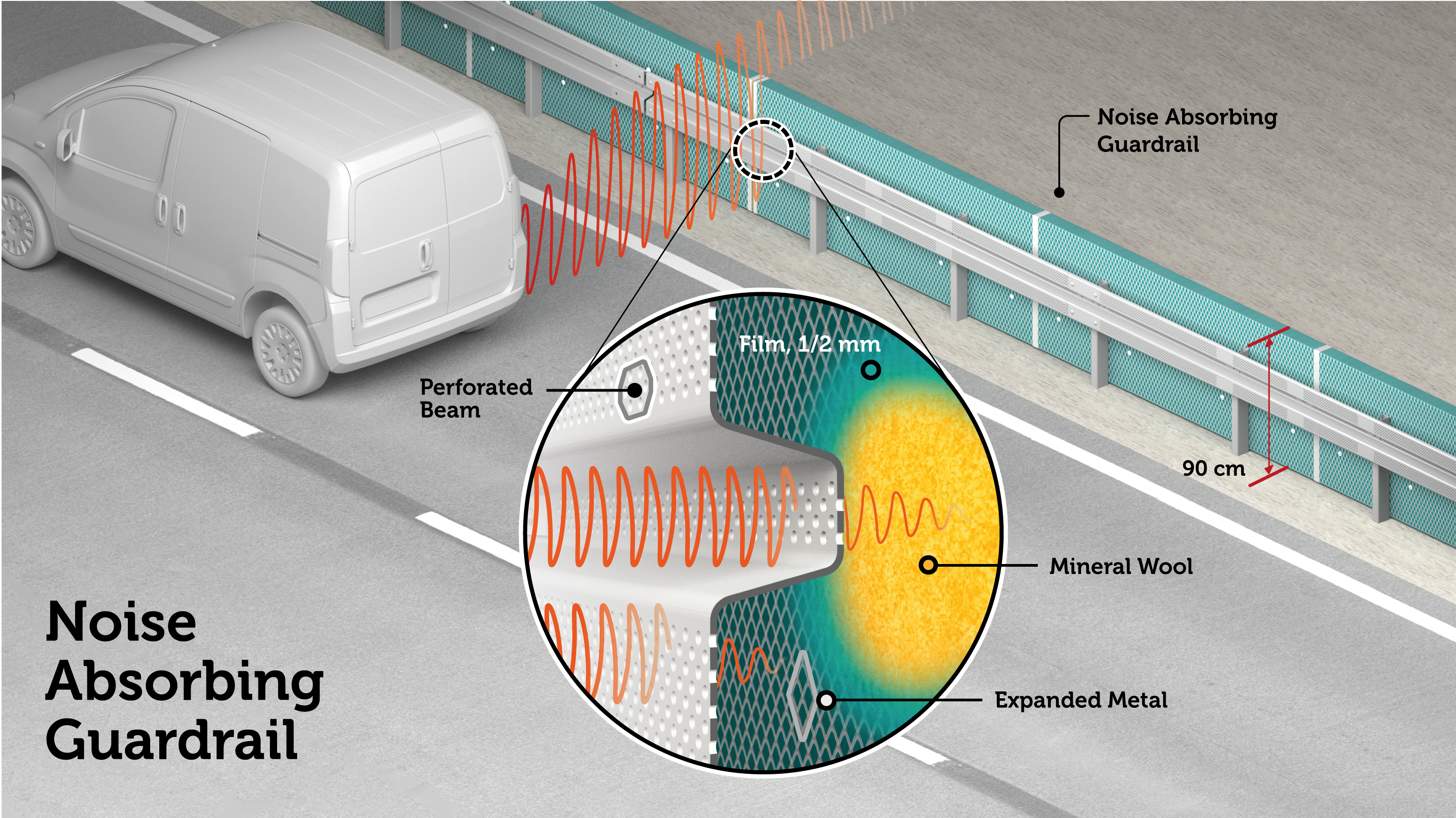Press release from Vejdirektoratet - It works
11/17/2017 5:24:04 PM, Leon S. P.
Graphic by Nag1
November 16, 2017
The Danish Road Directorate's attempt with a new type of groundbreaking guardrail that can dampen the road noise from the cars has yielded good results. The Danish-produced guardrail is set on an experimental stretch next to Paarup west of Silkeborg. Here the protection has been shown to dampen the noise by 2-5 decibels (dB), which corresponds to half the traffic volume.
"The results are very promising, and the guardrail can prove to be an important tool in the Road Directorate's battle against traffic noise on stretches of housing close to the road," says Jette Voigt, project manager in the Road Directorate.
Housing close to the road
The guardrail attempt has run in 2017 on a 800 meter long stretch of the highly-trafficked route 13 at Paarup. This particular stretch is characterized by homes all the way up and citizens who feel embarrassed by the traffic noise. During the test, the Road Directorate has put measuring equipment on selected houses and the noise test has been verified using computer models.
The overall picture shows that the noise at Paarup is dampened by 2-5 dB depending on the distance from the road.
However, it is still too early to transfer the good results at Paarup directly to other places along the road network, "emphasizes Jette Voigt.
"The location of a noise-damping guardrail close to the road and thus the traffic noise has had a significant effect on the nearest houses. Our measurements also show that the car protection has a good effect up to 60 meters from the road and actually further away. But the effect depends on the local conditions. We therefore need to have results from other test strings in the country before we can say more about how effective the host is, "says Jette Voigt.
Multiple test strings
The Road Directorate collaborates with Ishøj and Vallensbæk municipalities, which have set up the guardrail on a stretch in each municipality. The tests together could give a more clear picture of the conditions under which the car protection has the best effect.
The advantage of a noise-suppressing guardrail is that it is located closer to the road and thus the source of noise, as well as can be stretched, for example, due to space shortage, it is not possible to set up the traditional noise shields. In addition, the car protection is a cheaper alternative to noise shields.
The Danish trials with the car guard are being followed with interest from several countries, which are also working to bring noise from traffic into densely populated areas.
Guardrail with holes and stone wool
The car guard consists of a traditional guardrail, which is perforated with small holes. The guardrail has then been fitted with a cassette of stretch metal with rock wool. The road side of both the guardrail and the cassette is thus open so that the stone wool can better absorb the traffic noise. The back of the cassette is closed, so that most of the muted noise gets inside the cassette.
The noise-suppressing guardrail is Danish, developed by the Danish company NAG1 in cooperation with Rockwool, Volkmann & Rossbach and RMIG.
More information:
Project Manager Jette Voigt, Road Directorate, tel: 7244 2218
CEO Leon Samsø Pedersen, NAG1, tel: +45 30 57 39 93
Communication consultant Andrew Crone-Langkjær, Road Directorate, tel: 7244 3621